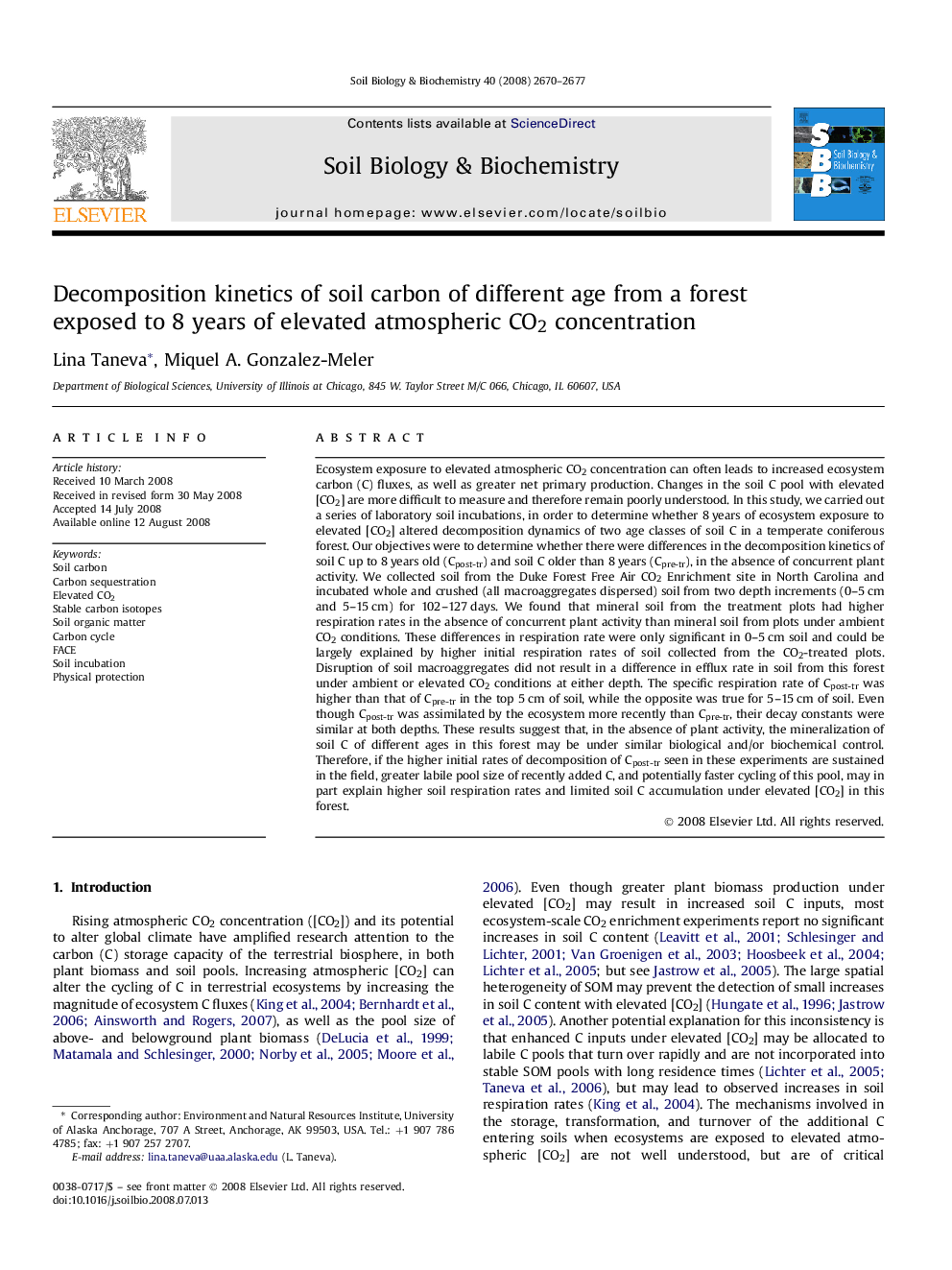| Article ID | Journal | Published Year | Pages | File Type |
|---|---|---|---|---|
| 2025670 | Soil Biology and Biochemistry | 2008 | 8 Pages |
Ecosystem exposure to elevated atmospheric CO2 concentration can often leads to increased ecosystem carbon (C) fluxes, as well as greater net primary production. Changes in the soil C pool with elevated [CO2] are more difficult to measure and therefore remain poorly understood. In this study, we carried out a series of laboratory soil incubations, in order to determine whether 8 years of ecosystem exposure to elevated [CO2] altered decomposition dynamics of two age classes of soil C in a temperate coniferous forest. Our objectives were to determine whether there were differences in the decomposition kinetics of soil C up to 8 years old (Cpost-tr) and soil C older than 8 years (Cpre-tr), in the absence of concurrent plant activity. We collected soil from the Duke Forest Free Air CO2 Enrichment site in North Carolina and incubated whole and crushed (all macroaggregates dispersed) soil from two depth increments (0–5 cm and 5–15 cm) for 102–127 days. We found that mineral soil from the treatment plots had higher respiration rates in the absence of concurrent plant activity than mineral soil from plots under ambient CO2 conditions. These differences in respiration rate were only significant in 0–5 cm soil and could be largely explained by higher initial respiration rates of soil collected from the CO2-treated plots. Disruption of soil macroaggregates did not result in a difference in efflux rate in soil from this forest under ambient or elevated CO2 conditions at either depth. The specific respiration rate of Cpost-tr was higher than that of Cpre-tr in the top 5 cm of soil, while the opposite was true for 5–15 cm of soil. Even though Cpost-tr was assimilated by the ecosystem more recently than Cpre-tr, their decay constants were similar at both depths. These results suggest that, in the absence of plant activity, the mineralization of soil C of different ages in this forest may be under similar biological and/or biochemical control. Therefore, if the higher initial rates of decomposition of Cpost-tr seen in these experiments are sustained in the field, greater labile pool size of recently added C, and potentially faster cycling of this pool, may in part explain higher soil respiration rates and limited soil C accumulation under elevated [CO2] in this forest.
